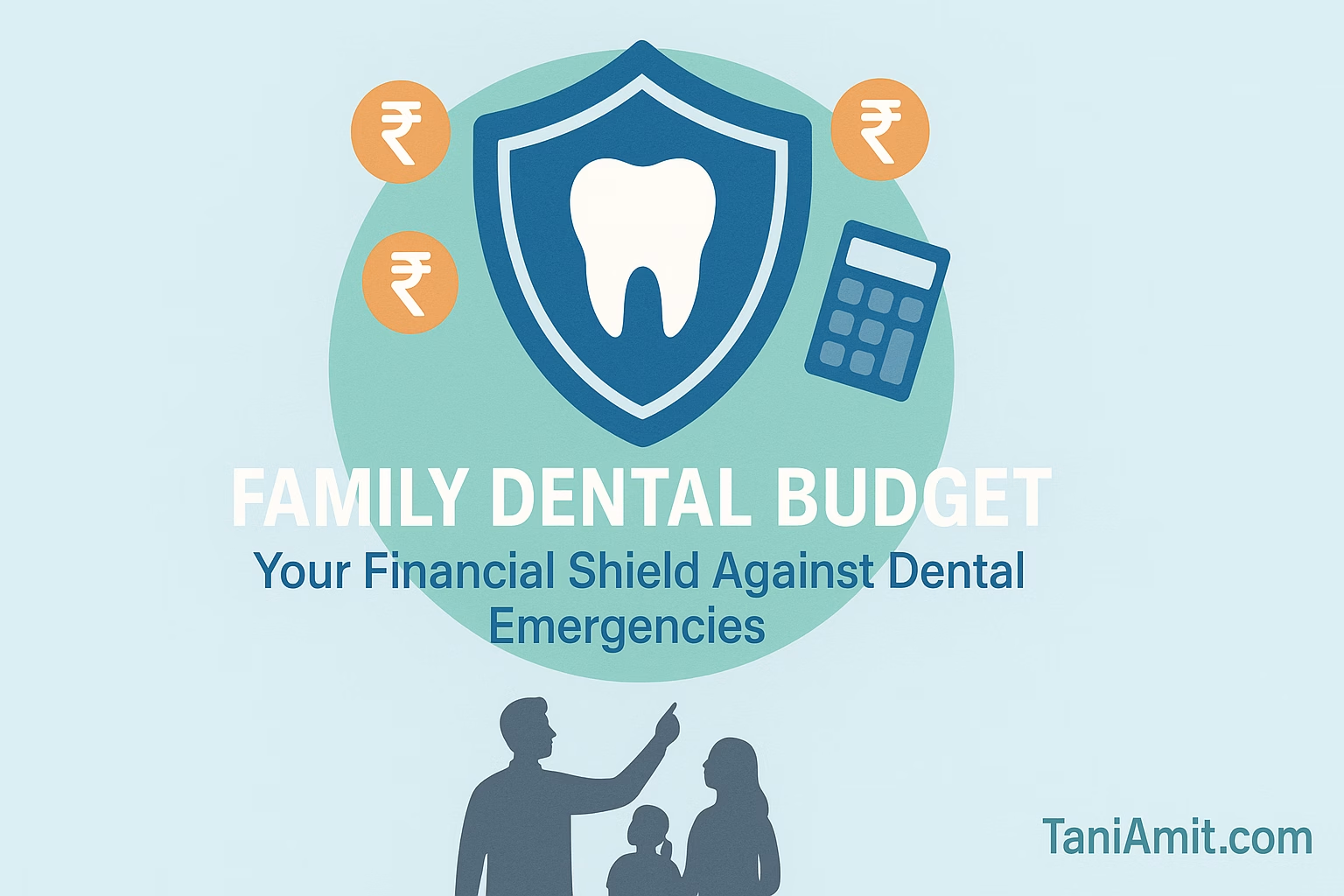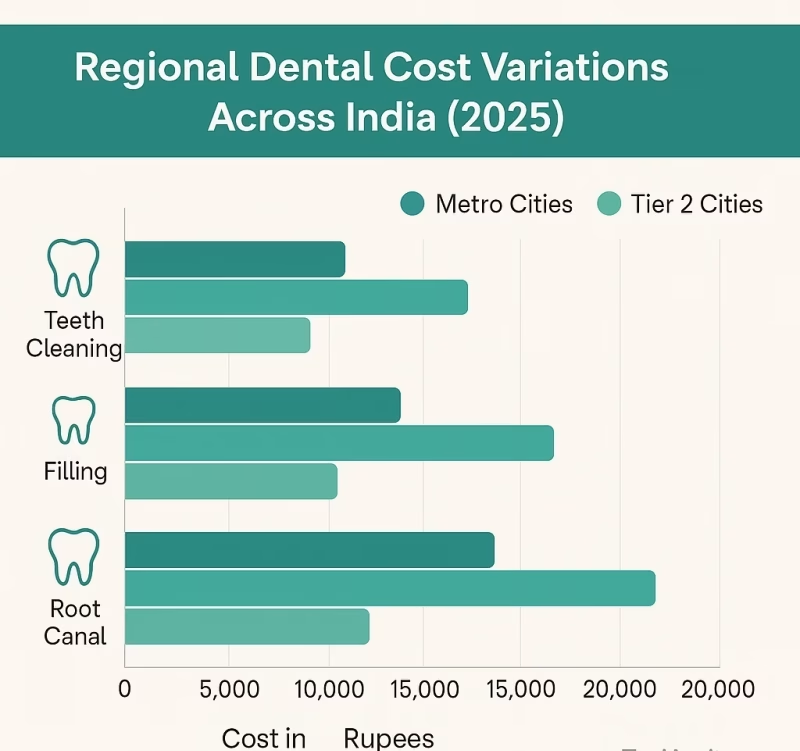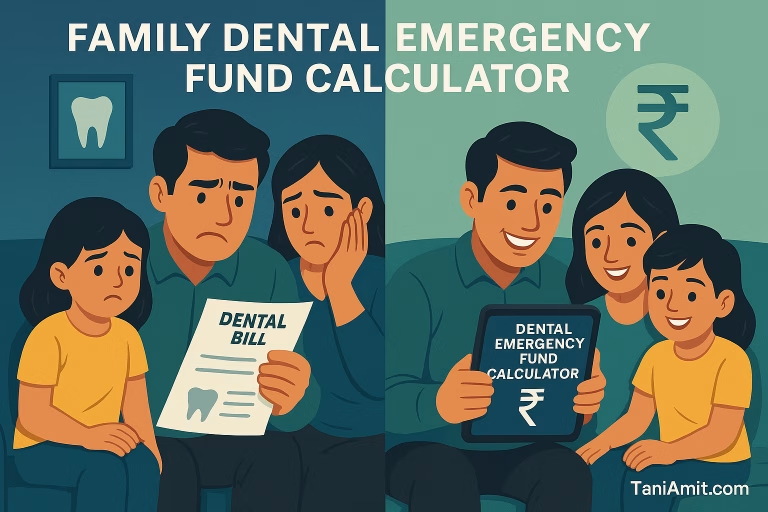Dental Budget Secrets 2025: Creating a Family Dental Care Monthly Budget

Did you know that the average Indian family spends over ₹30,000 annually on unexpected dental treatments? That’s a significant chunk of your hard-earned money that could be better allocated with proper planning! Creating a family dental care monthly budget isn’t just financial discipline—it’s taking control of your family’s oral health while protecting your wallet.
Quick Reference: Common Dental Costs in India (2025)
| Procedure | Metro Cities (₹) | Tier 2 Cities (₹) | Rural Areas (₹) |
| Routine Checkup | 800-1,500 | 600-1,200 | 400-800 |
| Deep Cleaning | 2,000-4,000 | 1,500-3,000 | 1,000-2,000 |
| Filling | 1,500-3,500 | 1,200-2,800 | 800-2,000 |
| Root Canal | 8,000-15,000 | 6,000-12,000 | 4,000-10,000 |
| Crown | 5,000-20,000 | 4,000-15,000 | 3,000-12,000 |
| Braces | 30,000-80,000 | 25,000-60,000 | 20,000-50,000 |

Why Every Indian Family Needs a Dental Care Budget
The financial impact of unplanned dental emergencies can devastate family finances. Just last year, my own family faced an unexpected root canal treatment that cost us ₹15,000—money we hadn’t budgeted for and had to pull from our vacation savings.
Also Refer: How to Create a Complete Preventive Dental Care Plan for Your Family in 2025.
The Prevention Advantage
- Preventive care costs 60-80% less than treatment for dental issues
- Regular checkups (₹800-1,500) prevent treatments costing ₹8,000-25,000
- Indian families save 40-60% on annual dental expenses through proper budgeting
Success Story: The Sharma family from Bangalore reduced their yearly dental expenses from ₹45,000 to just ₹18,000 by implementing a monthly oral healthcare budget strategy.

Quick Budget Calculator
For a family of four, estimate your monthly dental budget:
Monthly Preventive Budget = (Cost per checkup × 2 visits × family members) ÷ 12
Emergency Fund Contribution = Target fund size (₹15,000) ÷ Months to build fund
Supplies Budget = ₹250-400 per month
Example: Family of 4 with checkups at ₹1,500 each
- Monthly Preventive: (₹1,500 × 2 × 4) ÷ 12 = ₹1,000/month
- Emergency Fund: ₹15,000 ÷ 12 = ₹1,250/month (to build in 1 year)
- Supplies: ₹400/month
- Total Monthly Budget: ₹2,650
Assessing Your Family’s Current Dental Expenses
Before creating your budget, understand where your money is currently going:
- Gather Past Records
- Collect all dental receipts and insurance claims from the last 12-24 months
- Download our Dental Expense Tracker Template to organize this information
- Categorize Your Expenses
- Preventive care (cleanings, check-ups, X-rays)
- Treatments (fillings, crowns, root canals)
- Emergency procedures
- Products (toothbrushes, paste, floss, mouthwash)
- Calculate Your Baseline
- Monthly Average = Total Annual Dental Expenses ÷ 12
- Identify seasonal patterns (school holidays, year-end insurance periods)
Essential vs. Discretionary Dental Expenses
Must-Have Budget Components
- Bi-annual professional cleanings and check-ups
- Essential X-rays (typically every 1-2 years)
- Basic dental hygiene supplies
- Treatment of active decay or infection
Return on Investment
A ₹1,000 preventive cleaning can save ₹15,000 in cavity treatments—a 1,400% return!
Age-Specific Budget Considerations

| Family Member | Budget Priority | Approximate Cost |
| Young Children (0-12) | Preventive care, sealants | ₹3,000-5,000/year |
| Teens (13-19) | Preventive care, orthodontics | ₹5,000-50,000/year |
| Adults (20-60) | Preventive care, restorative work | ₹4,000-12,000/year |
| Seniors (60+) | Preventive care, dentures, implants | ₹6,000-30,000/year |
Dental Value Quotient: Long-term Health Benefit ÷ Current Cost Use this formula to prioritize different dental services in your budget.
Creating Your Monthly Family Dental Budget Framework
Step 1: Establish Core Budget Categories
<img src=”/api/placeholder/400/320″ alt=”Budget Allocation Pie Chart”>
Ideal Budget Allocation
- Preventive Care: 40-50%
- Emergency Fund: 20-30%
- Insurance Premiums: 0-20% (if applicable)
- Regular Supplies: 10-15%
- Special Needs/Treatment: Remaining %
Step 2: Calculate Monthly Allocations
Preventive Care
Monthly Preventive Budget = (Cost per visit × Visits per year × Family members) ÷ 12
Emergency Fund
- Start with ₹5,000
- Add ₹500-1,000 monthly until you reach ₹10,000-15,000
- Replenish after using for emergencies
Insurance Planning
- If insured: Include premium in monthly budget
- If uninsured: Allocate equivalent funds to self-insurance approach
Monthly Supplies
- Quality toothbrushes (replaced quarterly): ₹150-200/person/year
- Toothpaste, floss, mouthwash: ₹200-300/month for family of four
Family-Specific Budget Customization
For Families with Young Children
- Additional budget for pediatric dentist visits (₹500-1,000 more per visit)
- Preventive sealants (₹1,000-2,000 per child)
- Focus on education and habit formation
For Families with Teens Needing Orthodontics
- Create a dedicated orthodontic savings fund (₹2,000-5,000 monthly)
- Research payment plans (typically ₹5,000-10,000 initial + ₹2,000-4,000 monthly)
- Budget for additional hygiene products specific to braces
For Multi-generational Households
- Allocate higher percentages for senior dental care
- Consider specialized denture care products
- Plan for more frequent checkups for seniors and children
For Families Without Dental Insurance
- Increase emergency fund target (₹20,000-25,000)
- Research and budget for dental discount plans
- Allocate more for preventive care to avoid costly treatments
Smart Strategies to Reduce Monthly Dental Expenses
Preventive Focus
- Never skip routine check-ups and cleanings
- Budget for professional cleanings every 6 months
- Invest in quality electric toothbrushes and water flossers
Insurance Maximization
- Schedule optional procedures strategically to maximize benefits
- Use remaining benefits before year-end
- Consider dental discount plans as alternatives to traditional insurance
Cost-Effective Care Options
| Option | Potential Savings | Best For |
| Dental Schools | 30-50% | Routine care, basic treatments |
| Community Clinics | 20-40% | Preventive care, basic treatments |
| Government Hospitals | 40-60% | Complex treatments, surgeries |
| Dental Tourism (major cities) | 15-30% | Extensive work requiring multiple visits |
Payment Strategies
- Negotiate cash discounts (typically 5-15%)
- Establish interest-free payment plans for larger treatments
- Time major treatments with tax refunds or bonuses
Digital Tools for Budget Management
Recommended Apps for Indian Families
- Money Manager: Best for categorizing dental expenses
- ET Money: Excellent for tracking healthcare spending
Digital Organization System
- Set up automated savings transfers for dental funds
- Create digital calendar reminders for:
- Routine appointments (6-month intervals)
- Insurance claim deadlines
- Product replacement schedules
- Maintain cloud-based dental records using CareZone or Google Drive
Monthly Budget Implementation Timeline
| Month | Action |
| Month 1 | Set up budget categories and begin tracking expenses |
| Month 2-3 | Build initial emergency fund (₹5,000) |
| Month 4-6 | Schedule preventive appointments |
| Month 7-9 | Review and adjust budget based on actual expenses |
| Month 10-12 | Maximize insurance benefits (if applicable) |
| Annually | Conduct comprehensive budget review and adjustment |
Measuring Success and Adjusting Your Dental Budget
Key Performance Indicators
- Total dental spending compared to pre-budget baseline
- Percentage of emergency vs. planned dental expenses
- Preventive appointment compliance rate
- Growth rate of your dental emergency fund
Quarterly Review Process
- Compare actual vs. budgeted spending
- Identify patterns and anomalies
- Adjust allocations as needed
- Update savings goals based on upcoming needs
Success Story: The Verma family from Delhi reduced their dental emergencies by 80% and their total dental spending by 45% after implementing a structured budget.
Conclusion
Creating and maintaining a family dental care monthly budget is one of the smartest financial moves for your family’s health and wealth. By following this step-by-step approach, you’re creating a framework for better oral health outcomes while protecting your financial future.
Reach out to us for any question or content/copywriting needs.
Take action today by joining our newsletter and get our premium resources for free.


